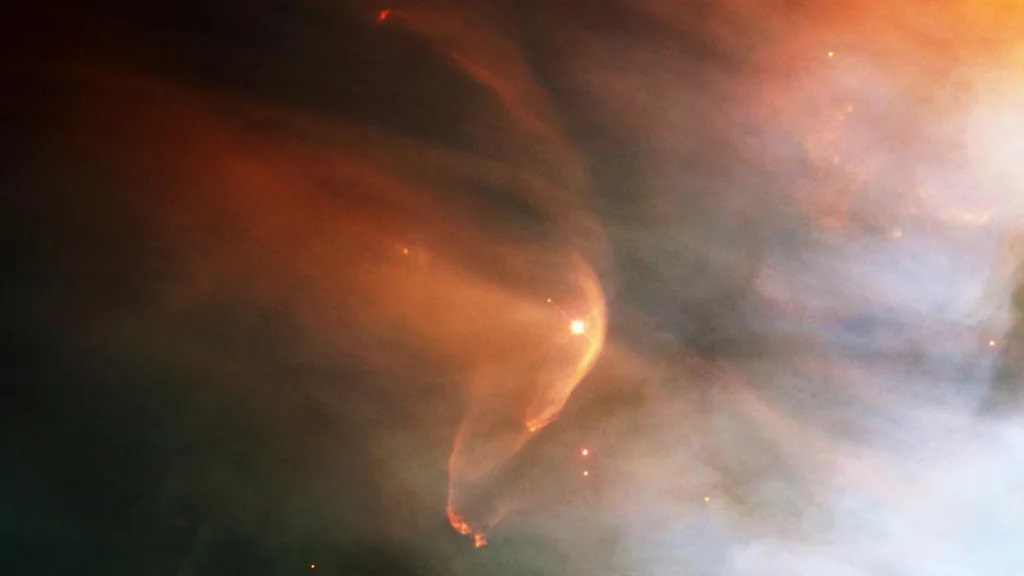An international research team led by the University of Vienna has made a major breakthrough. In a study recently published in Nature Astronomy, they describe how they conducted the first direct measurements of stellar wind in three Sun-like star systems. Using X-ray emission data obtained by the ESA’s X-ray Multi-Mirror-Newton (XMM-Newton) of these stars’ “astrospheres,” they measured the mass loss rate of these stars via stellar winds. The study of how stars and planets co-evolve could assist in the search for life while also helping astronomers predict the future evolution of our Solar System.
The research was led by Kristina G. Kislyakova, a Senior Scientist with the Department of Astrophysics at the University of Vienna, the deputy head of the Star and Planet Formation group, and the lead coordinator of the ERASMUS+ program. She was joined by other astrophysicists from the University of Vienna, the Laboratoire Atmosphères, Milieux, Observations Spatiales (LAMOS) at the Sorbonne University, the University of Leicester, and the Johns Hopkins University Applied Physics Laboratory (JHUAPL).
Astrospheres are the analogs of our Solar System’s heliosphere, the outermost atmospheric layer of our Sun, composed of hot plasma pushed by solar winds into the interstellar medium (ISM). These winds drive many processes that cause planetary atmospheres to be lost to space (aka. atmospheric mass loss). Assuming a planet’s atmosphere is regularly replenished and/or has a protective magnetosphere, these winds can be the deciding factor between a planet becoming habitable or a lifeless ball of rock.

While stellar winds mainly comprise protons, electrons, and alpha particles, they also contain trace amounts of heavy ions and atomic nuclei, such as carbon, nitrogen, oxygen, silicon, and even iron. Despite their importance to stellar and planetary evolution, the winds of Sun-like stars are notoriously difficult to constrain. However, these heavier ions are known to capture electrons from neutral hydrogen that permeates the ISM, resulting in X-ray emissions. Using data from the XXM-Newton mission, Kislyakova and her team detected these emissions from other stars.
These were 70 Ophiuchi, Epsilon Eridani, and 61 Cygni, three main sequence Sun-like stars located 16.6, 10.475, and 11.4 light-years from Earth (respectively). Whereas 70 Ophiuchi and 61 Cygni are binary systems of two K-type (orange dwarf) stars, Epsilon Eridani is a single K-type star. By observing the spectral lines of oxygen ions, they could directly quantify the total mass of stellar wind emitted by all three stars. For the three stars surveyed, they estimated the mass loss rates to be 66.5±11.1, 15.6±4.4, and 9.6±4.1 times the solar mass loss rate, respectively.
In short, this means that the winds from these stars are much stronger than our Sun’s, which could result from the stronger magnetic activity of these stars. As Kislyakova related in a University of Vienna news release:
“In the solar system, solar wind charge exchange emission has been observed from planets, comets, and the heliosphere and provides a natural laboratory to study the solar wind’s composition. Observing this emission from distant stars is much more tricky due to the faintness of the signal. In addition to that, the distance to the stars makes it very difficult to disentangle the signal emitted by the astrosphere from the actual X-ray emission of the star itself, part of which is “spread” over the field-of-view of the telescope due to instrumental effects.”

For their study, Kislyakova and her team also developed a new algorithm to disentangle the contributions made by the stars and their astrospheres to the emission spectra. This allowed them to detect charge exchange signals from the stellar wind oxygen ions and the neutral hydrogen in the surrounding ISM. This constitutes the first time X-ray charge exchange emissions from the extrasolar astrospheres have been directly detected. Moreover, the mass loss rate estimates they derived could be used by astronomers as a benchmark for stellar wind models, expanding on what little observational evidence there is for the winds of Sun-like stars. As co-author Manuel Güdel, also of the University of Vienna, indicated:
“There have been world-wide efforts over three decades to substantiate the presence of winds around Sun-like stars and measure their strengths, but so far only indirect evidence based on their secondary effects on the star or its environment alluded to the existence of such winds; our group previously tried to detect radio emission from the winds but could only place upper limits to the wind strengths while not detecting the winds themselves. Our new X-ray based results pave the way to finding and even imaging these winds directly and studying their interactions with surrounding planets.”
In the future, this method of direct detection of stellar winds will be facilitated by next-generation missions like the European Athena mission. This mission will include a high-resolution X-ray Integral Field Unit (X-IFU) spectrometer, which Athena will use to resolve the finer structure and ratio of faint emission lines that are difficult to distinguish using XMM-Newton’s instruments. This will provide a more detailed picture of the stellar winds and astrospheres of distant stars, helping astronomers constrain their potential habitability while also improving solar evolution models.
Further Reading: University of Vienna, Nature Astronomy

